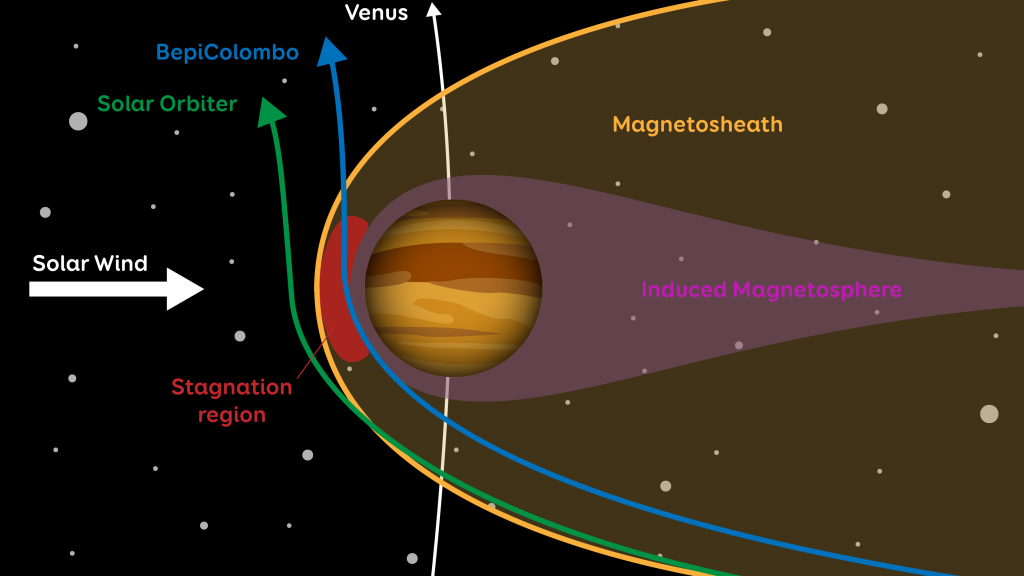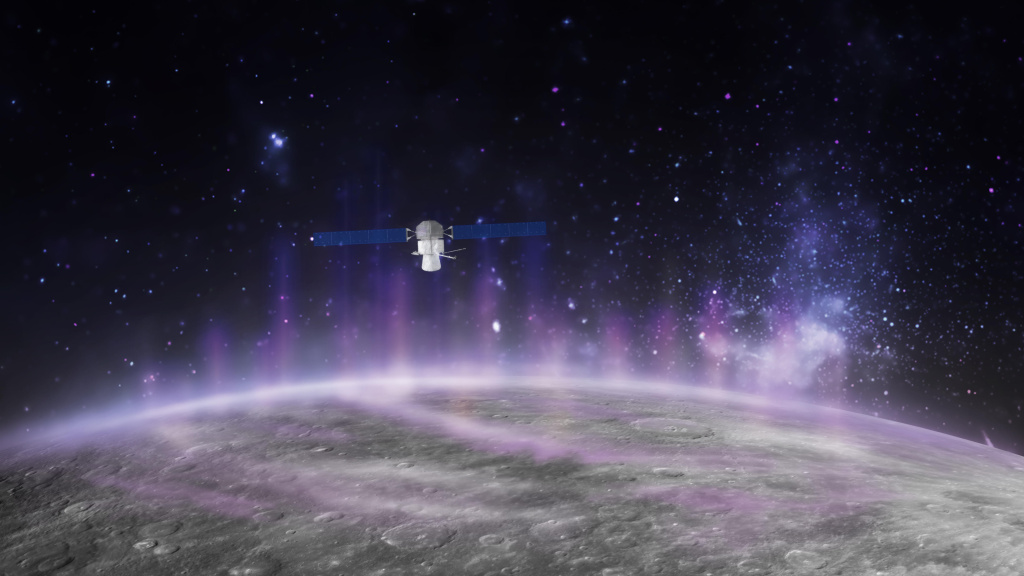SPIDER Space Weather Service Supports BepiColombo Studies at Venus and Mercury
Read article in the fully formatted PDF of the Europlanet Magazine.
Europlanet’s SPIDER space weather modelling tools have been used in two recent studies, published in Nature Communications, involving flybys by the joint European Space Agency (ESA) and Japanese (JAXA) BepiColombo mission, which is on its way to Mercury.
The lead authors of the studies, Moa Persson and Sae Aizawa, both received funding to carry out the research at the Institut de Recherche en Astrophysique et Planétologie (IRAP) in France through the Europlanet 2024 Research Infrastructure (RI) project.
The first study, published in December 2022, combined observations of the solar wind by BepiColombo and the ESA/ NASA Solar Orbiter, which both serendipitously flew by Venus within a day of each other in August 2021. The flybys resulted in data from eight sensors and two vantage points in space. The results of the study reveal how, without the protection of a global magnetic field, Venus’s thick atmosphere avoids erosion by the solar wind.
BepiColombo’s flyby of Venus was a rare opportunity to investigate the ‘stagnation region’, an area at the nose of the magnetosphere where some of the largest effects of the interaction between Venus and the solar wind are observed. The data, gathered during remarkably stable and quiet solar wind conditions, gave the first experimental evidence that charged particles in this region are slowed significantly by the interactions between the solar wind and Venus.
The observations also showed that the induced magnetosphere provides a stable barrier that protects the atmosphere of Venus from ‘stripping’ by the solar wind.


The second study, published in July 2023, relates to BepiColombo’s first flyby of Mercury on 1 October 2021. Analysis of data from three of BepiColombo’s instruments during the encounter, with a magnetosphere highly compressed by the solar wind, has revealed how electrons raining down onto the surface of Mercury can trigger high-energy auroras.
The study revealed how high energy electrons are transported from the tail region of the magnetosphere towards the planet, where they eventually rain down on the Mercury’s surface. Unimpeded by an atmosphere, they interact with material on the surface and cause X-rays to be emitted, resulting in an auroral glow. The study also confirms that the mechanism that generates auroras is the same throughout the Solar System.
The Venus flyby occured during remarkably stable and quiet solar wind conditions, in contrast to high-pressure solar wind conditions observed during the Mercury flyby.
Together, the studies demonstrate how turning sensors on during planetary flybys and cruise phases can lead to unique science.
Persson et al. DOI: 10.1038/s41467-022-35061-3
Aizawa et al. DOI: 10.1038/s41467- 023-39565-4


